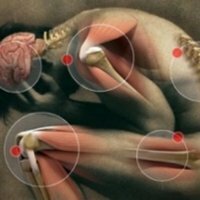Asthenic neurosis in a child

Neurasthenia( asthenic neurosis) is a disorder of the nervous system, which causes lethargy, weakness, depression, increased excitability, as a result of psychological trauma. Neurasthenia is the most common form of neurosis in adults, but it is also common in children. Opinions of psychiatrists concerning children's neurasthenia were divided: many foreign physicians assert that asthenic neurosis in the child can not develop, however the majority of psychiatrists widely diagnose it both in adults and in children.
The causes of asthenic neurosis in children can be serious and long conflict situations in school and at home, too rigid methods of education. Often, the cause is weakness of the body due to chronic diseases of internal organs, as well as all kinds of infections, the consequences of the child's nervous system diseases and so on.
However, the most important factor in the appearance of neurasthenia is undoubtedly a psychological trauma.
Excessive physical activity in children and exercise from an early age can rarely contribute to the onset of neurasthenia. They can cause only considerable fatigue, lethargy and overwork, which pass fairly quickly during rest. Only increased mental activity during training also rarely leads to neuroses. But if a child is engaged in several schools at the same time, or goes to school with a "bias" and overworked there mentally and physically, it can lead to neurasthenia. Especially if to such a child parents make too high demands, and he can not cope with the task and can not meet the expectations of his parents. So there is a psychological trauma.
When neurasthenia manifests asthenic syndrome. There are several types of asthenic disorders: hypersthenic, hyposthenic, psychoasthenic and asthenodepressive.
Hypersthenic syndrome is an increase in anxiety, the appearance of fears, excessive irritability, excitability, severe incontinence.
With hyposthenic syndrome there is increased fatigue, lethargy, decreased ability to work and progress in school, a significant weakness.
Priestoasthenic syndrome can manifest itself in considerable sensitivity, depression, excessive shyness and shyness.
The asthenodepressive syndrome is most often characterized by exhaustion, sluggishness, slowed-down physical and mental reactions. So, we can conclude that with an asthenic neurosis, the general background of mood decreases( this is how depressive reactions manifest), and also diagnose significant mental fatigue, irritability, weakness and depression.
Like other neuroses, neurasthenia is also capable of manifesting various autonomic disorders of some internal organs or organ systems( only those that have vegetative innervation).
Doctors often diagnosed with neurasthenia the most diverse manifestations of vegeto-dystonia. Among the problems with internal organs, one of the most common are pain in the heart. Also, there are often problems with the organs of the gastrointestinal tract, manifested as nausea or even vomiting( especially when there is a strong wave), a significant decrease in appetite, excessive selectivity in the choice of food. With constant serious and deep conflicts at home or at school, diarrhea or constipation is possible, absolutely not caused by objective reasons. Often there may be just aching pain in the abdomen.
Often, this neurosis in a child leads to sleep disturbances. One of the key clinical manifestations are severe headaches, which can be caused by neuromuscular or neurovascular disorders. Headaches are the main sign of vegetative disorders.
There is a hypothesis among psychiatrists that even in children under three years old( ie, early in life), observing the manifestations of vegetative and emotional-behavioral disorders, one can identify neurasthenia.



